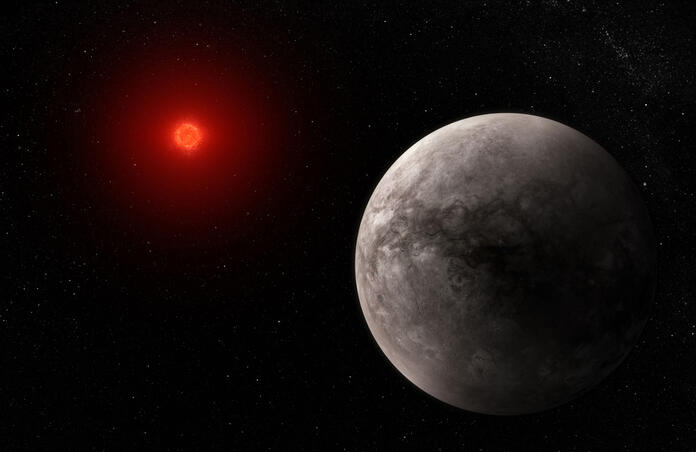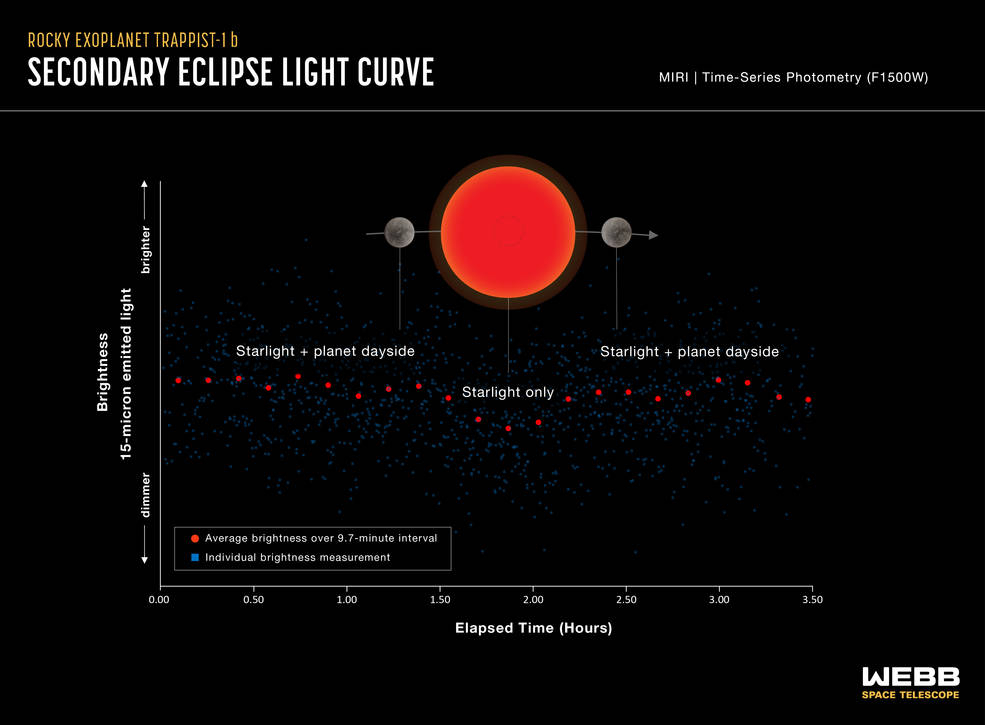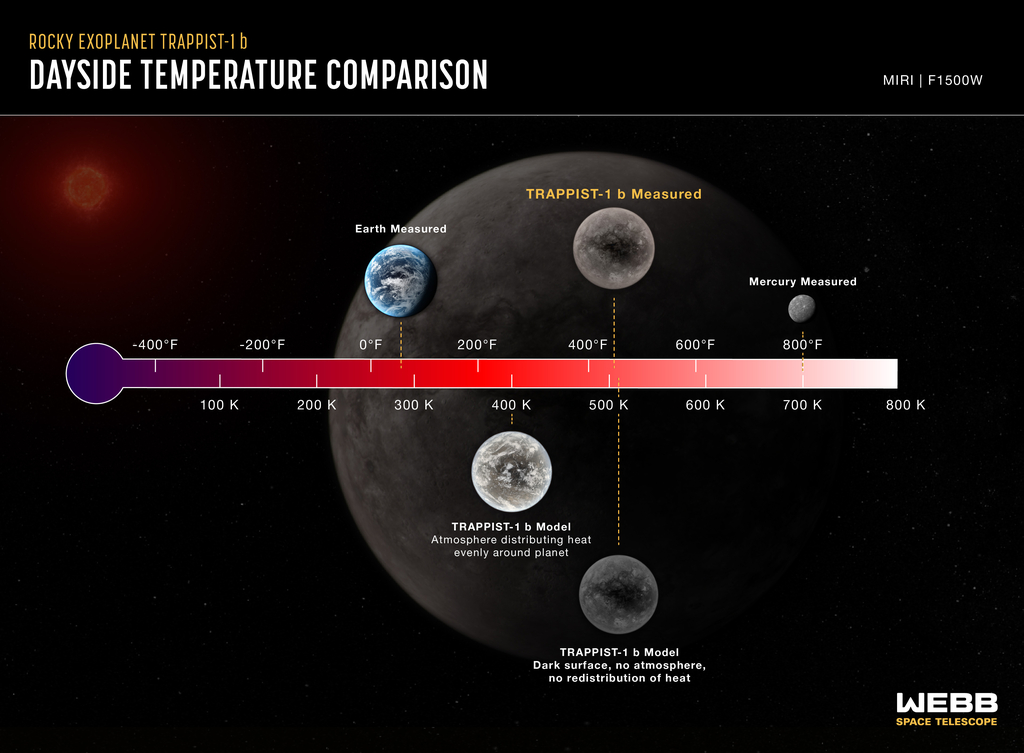Webb measures temperature of rocky exoplanet TRAPPIST-1b

NASA’s James Webb Space Telescope has completed another milestone in astrophysics, this time helping to measure the temperature of TRAPPIST-1 b, a rocky exoplanet. A team of astronomers used Webb to observe secondary eclipses, which is a major breakthrough alone, considering that the star is 1000 times brighter than its planet which reflects a change in brightness of under 0.1%.
The TRAPPIST-1 system was first discovered in 2017, consisting of seven rocky planets which closely orbit an ultra-cool red dwarf star located 40 light-years away in the constellation of Aquarius. The star is only slightly bigger than Jupiter, with a mass 88% of the sun's mass. This system intrigued astronomers since all planets have very close and fast orbits, much more so than any planets in our solar system- every planet’s orbit can fit within Mercury’s. However, each planet receives a comparable amount of stellar radiation, and three of these rocky planets are within the system's habitable zone. This means they may habour liquid water on their surfaces, so could potentially have the conditions suitable for sustaining life.
However, TRAPPIST- 1 b is not one of the three planets orbiting within the habitable zone. Nevertheless, observations of such a planet are important, since they can reveal information about the other planets within the system, as well as similar planetary systems. Elsa Ducrot from the French Alternative Energies and Atomic Energy Commission (CEA), France who is a co-author of the study explains, "It's easier to characterize terrestrial planets around smaller, cooler stars. If we want to understand habitability around M stars, the TRAPPIST-1 system is a great laboratory. These are the best targets we have for looking at the atmospheres of rocky planets."
Previous investigation has been carried out into TRAPPIST-1 b’s atmosphere, with observations being made using Hubble and Spitzer telescopes. However, these findings provided no evidence for a puffy atmosphere. Despite this, a dense atmosphere cannot be ruled out. To reduce the uncertainty in the nature of the planet’s atmosphere, its temperature can be measured. "This planet is tidally locked, with one side facing the star at all times and the other in permanent darkness," said Pierre-Olivier Lagage from CEA, a co-author on the paper. "If it has an atmosphere to circulate and redistribute the heat, the dayside will be cooler than if there is no atmosphere."

The team used the technique of eclipse photometry, utilising JWST’s mid-infrared instrument (MIRI). The brightness of the system was monitored whilst the planet moves behind the star. Since the planet emits in the infrared, the brightness from the planet alone can be determined by subtracting the brightness of the star from the combined brightness of the planet and star. These results indicated a dayside temperature of 500K, and indicating no significant atmosphere. This temperature is consistent with the assumption that the planet is tidally locked, along with a dark-coloured surface and no redistribution of heat from day to nightside. If there was the case of even distribution of heat energy around the planet, which could be due to a circulating atmosphere, a lower temperature would be measured. Additionally, if there was a significant amount of carbon dioxide in the atmosphere, an even lower temperature would be detected, therefore ruling out this scenario.

"We compared the results to computer models showing what the temperature should be in different scenarios," explained Ducrot. "The results are almost perfectly consistent with a blackbody made of bare rock and no atmosphere to circulate the heat. We also didn't see any signs of light being absorbed by carbon dioxide, which would be apparent in these measurements."
Further secondary eclipse observations are currently in progress, and the team hopes to observe a full phase curve that would show the change in brightness for the entire orbit. This will provide insight into how the temperature changes from day to nightside, and confirm if the planet has an atmosphere.
--
Cover image: NASA, ESA, CSA, J. Olmsted (STScI)
Journal source: Thomas P. Greene, Taylor J. Bell, Elsa Ducrot, Achrène Dyrek, Pierre-Olivier Lagage, Jonathan J. Fortney. Thermal Emission from the Earth-sized Exoplanet TRAPPIST-1 b using JWST. Nature, 2023; DOI: 10.1038/s41586-023-05951-7
